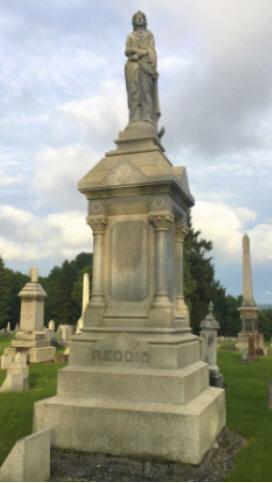Veteran’s Day

It is the anniversary of something that happened 103 years ago today. It happened in a rail car in a forest not far from a line of deep trenches that ran from the North Sea to the mountains of Switzerland. At the eleventh hour of the eleventh day of the eleventh month in 1918, the Germans quit and the First War was over. They did not know it would be known as “the First.” My Grandfather was somewhere in France, otherwise occupied at the time. That conflict was unimaginable in its scope and horror. It defined much of what came after, and the lives we have all lived within the consequences.
After the Americans came home, President Wilson signed legislation marking 11 November as Armistice Day, recognizing the end of the War to end all wars. It has been amended a few times since then and amended by President Eisenhower in 1954 to recognize the people who had served through the turbulence of World War Two and the wars around it. Today, the Afghanistan conflict has been closed as what some have called “America’s longest war.”
That is a product of our unsettled times. I recall a circle of the Old Salts discussing how many conflicts in which they had participated. For many, the number was “four,” the ones that were declared, one way or another. I got to three, and that is where the discussion veered off into “operations,” or other actions that required the application of military force by the United States.
After that gathering on another sunlit afternoon with good friends and shared memories another one came back. I was a young barely teenaged kid, and the family had gathered to bid farewell to a young man who exemplified the best of all of us. Tall, crisp in his Air Force uniform. Kind to us younger ones, determined to be the best at his craft. And arguably, he was. James Burr Reddig was the youngest designated Aircraft Commander in the Strategic Air Command. It was 1965. We gathered at the family plot in a little town in Cumberland County, Pennsylvania, and tried to accept the shocking reality of his loss. I remembered the handsome young man, dashing in his Galaxy convertible and sharp in his flight suit.
The incident that took him occurred in the mutual deterrence phase of the Cold War. He was piloting USAF B-47E Stratojet #52-0171, returning Stateside from a deployment to Europe to pose a deterrent to Soviet adventures on the continent. It was a routine mission for the 351st squadron, 100th Bomb Wing, USAF. But it hadvast consequences if directed to act. But that phase was over, and his jet was leading the flight of bombers homeward to Pease Air Force Base in New Hampshire.
Ahead was the prospect of some welcome down-time after serving on the tip of deterrence. The phrase “enough gas in the air?” would later become a common question to ensure safe flying and mission accomplishment. One bomber in the flight had refueled from their KG-135 tanker in the brilliant 9:30 a.m. sunshine at 23,000 feet, the Atlantic’s turbulent waves far below. As one jet detached, cousin Burr was approaching behind the tanker. Reports later indicated refueling contact had not jet commenced, but there was an undetermined accident resulting in a collision. Both tanker and bomber suddenly exploded in a massive growing sphere of flame. In a moment they were lost with the crews of four aboard each bomber. None were seen to escape from either aircraft.
Cousin Burr was able to safely eject from his jet and ride his parachute with seat pack thousands of feet down to the sea. There, in the frigid water, he was able to inflate and man his raft in accordance with SAC survival training. Unfortunately, search crews did not spot him on the long afternoon of searching, and he was not recovered until the next day. He perished from exposure to the frigid North Atlantic. He was the only one found of the crews involved, and in a small way, his funeral represented a ceremony for other the three young men who shared his aircraft: Major Charles E. Michigan, Capt. Milton S. Stone and Capt. Frank Valazquez.
A hundred years ago today, Arlington National Cemetery dedicated the Tomb of the Unknown Soldier. He came home, but without his name. The pristine pale stone represents the millions served. Today, the memory of another sunlit Pennsylvania afternoon 56 years ago is still vivid and palpable. They gave their lives to protect ours. And in the spirit of this day honoring all the Vets, let us remember a moment at Flight Level 23 that ended a flight home. They gave their all. Cousin Burr came home. He is a special memory today. And this is also a time for a special note. A special salute for the ones who have no markers. And who remain eternally deployed. For all of us.
Screen Shot 2021-11-08 at 4.28.33 PM.png
Copyright 2021 Vic Socotra
www.vicsocotra.com
